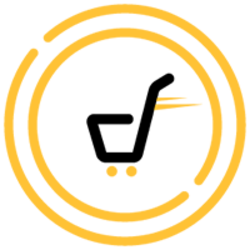In the dynamic world of cryptocurrencies, the Directed Acyclic Graph (DAG) is emerging as an intriguing alternative to conventional blockchain technology. DAG is causing a disturbance in the cryptocurrency market by providing unique advantages such as improved scalability, speed, and transaction cost-efficiency. This article provides an in-depth analysis of the DAG concept, its implementation in popular cryptocurrencies such as IOTA and Nano, and its potential future in the world of digital currencies. In addition, it investigates the role of DAG in the advanced data solutions offered by Constellation Network, a company that has attracted the attention of the Department of Defense (DOD). The work also analyzes cutting-edge programs such as the Datapreneur Academy, which aims to equip consumers with the knowledge required to exploit their data in the new digital economy era.
A blockchain alternative being investigated by numerous cryptocurrencies is the directed acyclic graph (DAG). A DAG is an architecture for storing and moving data that, in contrast to a standard blockchain, does not require blocks or miners. The phrase “Directed Acyclic Graph” describes a branching graph (graph) formed by transactions that go through the network in a defined direction and cannot loop back on themselves.
A number of well-known DAG-based cryptocurrencies exist, such as IOTA, Nano, and Hedera Hashgraph. Each makes use of DAG technology in a slightly various manner. It’s crucial to emphasize that DAG is a data structure used by various cryptocurrencies rather than a form of money.
The primary distinction between regular blockchain and DAG technology is that traditional blockchain requires miners to validate transactions. In contrast, two prior transactions must be validated for each new transaction. Compared to typical blockchains, this approach is far more scalable because the network’s capacity grows as the number of users increases.
Scalability: The capacity to scale is the main benefit of DAG technology. The effectiveness and speed of the network rise together with the growth of users. Compared to traditional blockchain technology, which can experience network congestion and lengthy transaction times as more users join, this is a significant advantage.
Speed: Since there is no need to wait for block confirmation, transactions on a DAG network happen quickly. They are instead verified by subsequent transactions. DAG-based coins are a more usable option for regular transactions because of their speed.
Transaction costs are nonexistent in many DAG-based coins, including IOTA. Microtransactions are possible thanks to the lack of fees, which is not possible with Bitcoin or Ethereum due to their high transaction costs.
Security is the main issue with DAG-based coins. Since only two transactions before it are verified, it is possible for an attacker to overwhelm the network with fake transactions. However, these risks can be reduced by a number of measures, including node reputation systems and requiring a small proof-of-work for each transaction.
Adoption is the second important difficulty. Despite having many benefits, DAG technology is less well-known and understood than conventional blockchain technology. This ignorance may prevent its widespread adoption.
The potential for DAG-based coins increases together with the development of technology. They have a lot of potential for resolving the scalability problems that traditional blockchains experience. DAG-based cryptocurrencies are anticipated to become more frequently used as these technologies advance and gain wider acceptance.
Although it is a data structure for distributed ledger technologies, Directed Acyclic Graph (DAG) is not a particular cryptocurrency with its own tokenomics. As a result, there isn’t a “tokenomics of DAG” that can be used everywhere. Instead, the tokenomics or economic system that governs the creation, distribution, and management of tokens is specific to each DAG-based cryptocurrency.
Think about IOTA and Nano as two instances of DAG-based cryptocurrencies. The “Tangle” DAG structure is used by IOTA in place of a blockchain. With no use of mining, staking, or any other token production techniques, all 2,779,530,283,277,761 IOTA tokens were produced at launch. The tokens were sold in a crowdsale in 2015, and the IOTA Foundation also keeps a sizeable portion for use in research and development. The IOTA network does not require miners or stakers, hence there are no transaction fees because each transaction must validate two prior transactions. Specifically for machine-to-machine transactions in the Internet of Things (IoT), IOTA is largely utilized for value transfer.
A DAG structure is used by Nano, formerly known as RaiBlocks, however it has a special feature in that each account has its own blockchain, or “account-chain.” A maximum quantity of 133,248,290 NANO tokens were produced at launch as part of Nano’s tokenomics. The initial captcha-based faucet technique used to distribute Nano tokens was discontinued in 2017. Nano uses a delegated proof-of-stake (dPoS) method for conflict resolution, however individual transactions are not subject to network-wide scrutiny. The primary function of Nano is to enable peer-to-peer value transmission by providing zero costs and nearly instantaneous transaction speeds.
Constellation now has the Department of Defense (DOD) as a client, and it is building state channels on the Hypergraph. This significant partnership highlights the dependability and potential of Constellation’s technology. This cooperation is especially significant because the DOD, which is renowned for its strict selection criteria, does not work with just any blockchain platform.
The ‘new oil’ of today’s digital economy is data, which is frequently referred to as such. For useful data that can offer insights to enhance operational performance, guide strategy, or forecast market trends, businesses are willing to pay a premium. As a result, it is imperative to safely and effectively store and handle this data.
For the largest data generators, Constellation provides an appealing option using its Hypergraph technology. It offers a platform for organizing and storing data that is secure, scalable, and effective. This value proposition appeals to businesses that generate a lot of data and are prepared to spend money on dependable data management solutions. The partnership between the DOD and Constellation is evidence of the capabilities and possibilities of Constellation’s technology, which is important given the contemporary digital environment’s emphasis on data and safe data storage.
Constellation Network created the Dor Traffic Miner (DTM), a gadget that counts people by using thermal sensing technology, essentially tracking data on foot traffic. A new class of data entrepreneurs, or “datapreneurs,” who can use this data for numerous purposes, are helped by the device, which was created for the Internet of Things (IoT) era.
The DTM is also known as a “lite node” in the Constellation Network, which denotes that it takes part in network activities. Users can earn DAG, the Constellation Network’s native cryptocurrency, by operating the device. Rewards are distributed daily and this earning method works whether or not data is mined. The DTM’s purchase price is staked in the validator reward pool, enhancing the network’s financial stability.
A purchase of the DTM also includes a special Non-Fungible Token (NFT), which has two uses in addition to the device itself. It serves as your DTM’s certificate of ownership, first and foremost. Second, it acts as a code to open up various awards, bounties, and other things. Only 5,000 of these NFTs were produced, making them extremely uncommon and collectible.
Last but not least, Constellation Network’s Datapreneur Academy encourages users to take charge of their data. The instructional materials on managing and monetizing personal data assets are available on this educational portal. Constellation envisions a society in which people can harness the power and value of their data rather than giving it up to larger institutions by promoting the idea of the datapreneur.
The exploration of Directed Acyclic Graph (DAG) technology in this article underscores its potential in transforming the cryptocurrency landscape and beyond. In the era of data being the ‘new oil’, it is more crucial than ever to harness secure and effective data management solutions such as those provided by Constellation Network. With the rise of the datapreneur, individuals and organizations are now more empowered to control and monetize their data assets, and innovative tools like the Dor Traffic Miner are becoming indispensable. As we continue to navigate the intricate world of digital currencies and data management, it is essential to stay informed and seek professional guidance. For those seeking to leverage the Dor Traffic Miner and other cutting-edge tools, we encourage you to book Businessplugs. Their expertise can help you navigate these complex technologies and maximize their potential in your digital journey.





